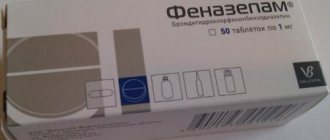A verticalizer is a device that can be used independently or in addition to other rehabilitation means. Designed to support the body in an upright position for people with limited mobility. The main purpose is to prevent and mitigate the negative consequences of a sedentary or recumbent lifestyle, such as bedsores, renal and pulmonary failure, and osteoporosis.
In this article, special attention will be paid to the features of verticalizers for children with cerebral palsy.
Existing types of verticalizers
Let's look at the types of verticalizers on the market.
A device in which the patient has support on the stomach is especially common and is called anterior. Designed for patients without problems with holding their head.
The second type is intended for people with a weakened spine and severe disorders of the musculoskeletal system. The verticalizer with reverse support (rear) is additionally equipped with a mechanism for gradually moving a person from a lying position to a vertical one.
Multi-level devices allow the patient to occupy several positions - sitting, upright, lying down, without changing the rehabilitation device.
Static verticalizers are intended for those unable to move independently. Equipped with wheels designed to help caregivers move short distances in an upright position.
Mobile, on the contrary, is designed for independent movement in a standing position.
The mobile verticalizer allows you not only to move, but also to train your leg muscles by moving levers with your hands, which are mechanically connected to your feet.
What types are there
Based on their functional features, the following groups of devices can be distinguished:
- static;
- dynamic.
The first type does not imply independent movement of a patient with cerebral palsy, for example, a vertical table and the above-mentioned device models. They usually have orthopedic lining, which ensures comfortable placement of the child in various positions. The existing wheels ensure that the devices can only be moved with assistance from others, for example, parents or a nanny.
To better adapt a sick baby to the device, some models are stylized to resemble animals, for example, cats, dogs, dinosaurs. This gives the patient’s rehabilitation an element of play and contributes to better social adaptation.
The dynamic verticalizer gives the child the opportunity to move around. He can carry out this movement with the help of his legs, pushing off from the floor surface. Special mechanical designs can convert hand movements into forward motion of the device. Another option could be an electric drive.
Such devices must be sufficiently maneuverable and ensure safe movement throughout the room and fit into turns. Since with cerebral palsy there is usually an asymmetrical arrangement of the baby’s feet, it is recommended to wear orthopedic shoes when using the devices. Therefore, when purchasing a specific model, you need to make sure that the shoes are securely fixed in the foot holders.
Another very useful type of device is the parapodium. The parapodium allows the patient to move independently, balancing with the upper body. In other words, the parapodium transforms a change in the patient’s center of gravity into a forward movement of the apparatus. In this case, the platform on which the leg is fixed lifts off the floor and takes a kind of step forward.
There are three types of parapodiums. This:
- static parapodium for severely ill patients who are unable to move their upper limbs:
- dynamic parapodium for patients with preservation of functions of the upper limbs and trunk;
- a mobile parapodium for people that preserves some functions of the legs and the ability to support one’s own weight by leaning on the legs.
The design of the parapodium ensures the patient’s stability and protects him from falling even in the event of loss of consciousness.
There are five standard sizes of the device, allowing you to select a parapodium to suit the patient’s needs.
Correct selection of device
Only a specialist doctor can give the correct recommendations on choosing a verticalizer. To do this, the patient must undergo an examination, which will allow the doctor to identify underlying diseases, determine the type of device and level of body fixation, physical capabilities and permissible loads.
If possible, the patient should also participate in the choice of the device, because only he can determine the degree of comfort of the proposed device. However, the main criteria should be the doctor’s recommendations, since the device is intended to correct existing problems, and this may cause additional discomfort.
Correct size choice
The following parameters can help you select the device size:
- weight and height,
- foot length,
- hip width,
- chest volume,
- the distance from the foot to the shin and from the shin to the thigh on both legs.
It is also important to measure the distance from the foot to the chest. All measurements should be taken in clothes that are comfortable for the patient and usual shoes. If a child wears special orthopedic shoes, then measurements and fittings should be made in them. How to take measurements correctly, you should consult with your doctor, who will help determine possible measurement difficulties.
General technical specifications
Verticalizers for disabled people are available in different sizes, which are adjusted to the following parameters:
- hip width;
- hip depth;
- chest width;
- chest depth;
- height to the axis of the femoral joint;
- height to sternum;
- maximum permissible weight.
Standard vertical equipment:
- frame on swiveling wheels with brakes;
- chest and thigh clips with soft seal;
- stabilizers for arms, feet, knees;
- seat;
- table;
- electromechanical rotor;
- lower limb separator.
Important to remember!
Before each use, you should carefully check the serviceability of all clamps, as well as the reliability of the brakes.
The greater the angle of inclination of the verticalizer, the greater the load on the legs and spine. That is why it is unacceptable to start training immediately from 90°, and the time of the first training should not exceed 2-3 minutes.
The verticalizer is installed only on a horizontal surface without possible inclinations. If the device is not intended to be used, it must be put on the brake.
The first year of a child's life. Verticalization.
- 01.07.2016
| Quantity |
What is the main distinguishing feature of humans from animals? This is, first of all, the ability to know oneself. One of the opportunities for self-knowledge is free upper limbs.
A person’s upper limbs were freed as a result of his transition to an upright position; one might say, in this position his hands were untied and genetically fixed developmental mechanisms began to be realized.
According to K. Semenova, “The vertical position is a reflection of the way of human existence in the gravitational field of the Earth.”
For this reason, the quality of the formation of the musculoskeletal system depends on the quality of the vertical position of the body.
We know that orthopedists require verticalization like no one else and they are absolutely right, since the formation of, for example, hip joints depends on the quality of the vertical posture.
Thus, no one doubts the need to verticalize the child. At the same time, the problem of verticalization is one of the most pressing problems in the cerebral palsy clinic. In the presence of unreduced reflexes, contractures and deformations, against the background of weak back muscles, leg extensors and other typical clinical manifestations of cerebral palsy, it is traditionally a difficult task to qualitatively implement a vertical position in a child.
The entire first year of a child’s life is marked by the process of verticalization. It must be said that the evolutionarily fixed pattern of development of the species Homo sapiens presupposes a fairly strict process in which the loss of any links is highly undesirable.
Evolution (translated from Greek) is “unfolding with a certain pattern.” Now we mean evolution as the development within the species Homo sapiens or its postembryonic ontogenesis.
In the first months of life (age from one to three months), the child tries to overcome the forces of gravity by lifting his head from the surface.
Thanks to this movement, several important events occur in the psychophysical development of the child, one might say, key events for further development.
1. Formation of the anti-gravity complex (AGC)
2. Early reflexes give way to reflexes of later development.
3. The so-called “neurodynamic training” of muscle chains is carried out - extensors of the neck, back and hips.
4. In this way, the first stage of preparation for the great act of human nature is realized - the vertical position, as the pinnacle of evolution.
Let's consider the biomechanics of raising the head above the support. From the point of view of this very strict science, the kinematic model of a person is a system of levers. As you know, the action of a lever is possible only when SUPPORT is present.
In our case, the head is a lever, and the support is a circle in the form of a shoulder blade and collarbone.
In this case, the circle on one side is open and, for this reason, cannot serve as a full-fledged support for head movements, including raising the head above the support. Creating support for head movement involves tensing the muscles of the shear scapula. This is the action of the rhomboid muscles.
A child developing within normal limits has a very strictly fixed pattern, which consists in a certain order of inclusion of friendly movements (synergies) that ensure such movement. In this case, the action of the rhomboid muscles is first activated, giving the structure of the upper limb belt the necessary rigidity, as a support for the neck extensors.
This pattern occurs normally. If the fact of tearing off the child’s head did not take place, then development may well follow a distorted scenario.
It is also necessary to take into account that the child can raise his head using his forearms. In conditions of pathology of muscle tone, such an action can contribute to the development and consolidation of a pathological movement stereotype. At the same time, the work of the muscle chains necessary for standing upright is distorted. A pathological stereotype is formed and consolidated.
Against this background, muscle contractures and bone deformities occur.
These gross violations close the pathological circle of formation of the clinical picture of cerebral palsy.
pathological action of reflexes - pathological synergies -
muscle contractures – bone deformities
The triggering mechanisms that create serious obstacles to the control of head movements are well known; this is the flexion-adduction synergy in the muscles of the shoulder girdle, where the leading link is the pectoralis major muscle. According to Professor K. Semenova, “weakness or absence of the installation labyrinthine reflex leads to the fact that the head drops to the chest, as a result of which the tone of the pectoralis major muscle reflexively increases, this creates flexion-adduction synergy in the muscles of the shoulder girdle. Further, the anterior head of the deltoid muscle, the round muscle of the scapula, the upper portions of the trapezius and latissimus dorsi muscles participate in this synergy. The biceps brachii, brachioradialis, pronators and flexors also participate in flexion synergy.
Thus, we need a way to neutralize the effect of the trigger mechanism. This method may be to create conditions for training the muscles of the antagonists of the pectoralis major muscle, that is, the rhomboid muscles.
The photo shows this method of training the rhomboid muscles.
It is necessary to find specific methods that destroy and prevent the development of cerebral palsy. However, a child is a growing and developing organism, so we need methods that are not only destructive, but at the same time create physiological conditions for the development of the child. Exercises performed under conditions of a closed kinematic chain (CCC) have this effect. The unique properties of this movement algorithm include a pronounced reflex-inhibitory effect. The ZCC phenomenon also includes the ability to effectively eliminate (and prevent) muscle contractures, as well as a decisive role in the gradual equalization of muscle tone and creation close to the physiological norm.
Children's verticalizers for patients with cerebral palsy
Since the child will spend a lot of time in this device in the future, the choice should fall on verticalizer supports for children with cerebral palsy, equipped with tables with limiting sides, with the ability to change the angle of the table.
If a child experiences epileptic seizures or develops convulsive readiness, it is worth softening all hard edges with dense material.
It is worth noting that a large number of models of verticalizers have been produced for children suffering from cerebral palsy. Some manufacturers give their product the appearance of an animal, a car, a dinosaur, so that the treatment of a small patient takes on an element of play. If you have the funds, there will be no problems in choosing.
Design Features
Standers are made of steel, wood, durable aluminum alloy or reinforced plastic. The most common designs are made of lightweight and durable steel pipes. The basic package includes:
- frame - in the form of a stand or with a support;
- stops and clamps in the chest, hips, legs;
- foot platform;
- wheels for movement.
Depending on the model, the devices may have a chair, a table, and paired moving platforms for the legs controlled by levers - for example, like a verticalizer for simulating walking.
Stander Shifu Ocean
For example, the Shifu Ocean verticalizer for children with cerebral palsy is a combined device in which a sick child can be restrained either with the emphasis on the stomach or with the support on the back. In addition, it has several stages of fixation adjustment, as well as a soft orthopedic base, which makes the device additionally comfortable.
This device has a removable table that can be attached to both the front and rear. Its position can also be adapted to the different needs of the child using special regulators.
This line of products for children provides three sizes, taking into account the height of the patient.
Verticalizer for disabled people: why is such a complex device necessary?
Verticalizer for disabled people: why is such a complex device necessary?
A verticalizer for the disabled is a special device that helps people with limited physical capabilities to take a vertical body position.
Why do people with disabilities need a verticalizer?
Many disabled people are deprived of the ability to move independently due to atrophy or damage to the lower extremities.
There are also people who are completely immobilized due to serious illnesses or people who can only partially move. It is extremely undesirable for such people to constantly be in a horizontal position.
The first reason is psychological. The inability to participate in many processes depresses a person morally, he loses interest in life, and slowly sinks into depression.
With the help of a verticalizer (stander), people with disabilities have a chance to lead a completely different lifestyle.
The second reason for using a stander is medical. The thing is that in a horizontal position many processes in the body slow down, which leads to negative consequences such as: pulmonary and kidney failure, bedsores, osteoporosis, decreased blood pressure, slowed blood circulation.
Dynamic verticalizer Actival
Classification of verticalizers
Dynamic
A dynamic stander is a verticalizer for disabled adults to move independently.
It is equipped with large wheels, so a person can move using the force of his hands.
Static
A static verticalizer is a device that allows you to move around a room using small wheels on the device.
Static verticalizer Parapion
These devices can only move with the help of strangers.
Front
The front verticalizer for adults and children is a stand in which a person rests on his stomach.
Such devices are prescribed to people who can hold their head up independently.
Rear
Strollers
There are also verticalizers built into wheelchairs. They help you get into an upright position from a sitting position.
Functions of verticalizers
Benefits of use:
Children's stands help:
Standing devices for children with cerebral palsy help prevent the destruction of limb bones and strengthen muscles.
Factors to consider when choosing
The choice of stander should be given special attention.
Before purchasing, it is worth measuring the following parameters of the patient:
When choosing a device, always consult your doctor!
When choosing a stand for children with cerebral palsy, take into account the asymmetry of the pelvis. Choose verticalizers with rigid clamps. The straps must fit snugly to the body, otherwise the baby will simply hang on them.
When choosing a device for an adult, pay attention to its appearance. If a person cannot support his head on his own, then purchase a rear one, but if everything is fine with head support, then the front one is also suitable for rehabilitation.
DIY verticalizer
For manufacturing, it is better to choose wood. This material is easier to work with than metal.
Before manufacturing, it is worth deciding on the design and purpose of its use.
Scheme of a verticalizer for disabled people Akced Med
If it is needed for rehabilitation, then it is better to make a statistical rear stander. They are more comfortable for adults and are the easiest to make.
Initially, you will need to make a podium to which 4 small wheels are screwed. This is necessary to move the device. Then you should lean on your back.
It is worth remembering that before manufacturing it is necessary to take measurements from the patient in order to know what width and height to make.
After the back of the future device is made, it is necessary to screw supports to the wooden layer on the sides for greater stability. The next step is to drill two vertical openings in the board that serves as the backrest.
When drilling, take into account the width of the patient’s pelvis, because then wooden bases will be attached to these openings to support the pelvis.
Then you need to make 3 blocks that move in height: the first is designed to support the knees, the second to support the pelvis, the third to fix the chest. Moving blocks are very easy to make.
Then the middle block (for the pelvis) is equipped with sides to support the pelvis. This can be done using special metal brackets.
Then a long metal support is cut into the lower block and secured well with bolts. A wooden block the width of a person’s body is attached to this support. This block serves as a support for the knees.
Self-made verticalizer
Then the bases for the feet are made. The required distance is measured, and each place for the foot is made of two wooden blocks. Make sure that the base of the leg fits snugly to the sides.
Instead of such bases, you can attach special shoes for foot correction. These shoes have a hard back and a high instep, and thanks to the abundance of fasteners, they will secure the foot well.
Then all the blocks should initially be covered with foam rubber (3–4 cm is enough) and fabric for an attractive appearance.
The upper block (for the sternum or head) is equipped with fasteners with adjusters for fixing the body. This completes the manufacture of the stand with your own hands.
Conclusion
Stenders significantly improve the quality of life of people with disabilities. They help you take care of yourself.
These devices help to cope with depression due to immobilization of the body, and children using such devices learn to stand correctly, maintain balance and eat food independently.
Video: Video review of the SHIFU OCEANM verticalizer
Stander Robin
Robin devices are rear-supporting verticalizers for children with cerebral palsy and are available in two sizes for age categories 3-14 years. It is considered a compact device suitable for the rehabilitation of children with cerebral palsy. It has several supports, which, thanks to their ergonomic shapes, allow you to surround the child with an individual comfortable frame on all sides and give the body a stable vertical position. The support frame is equipped with tilt angle adjustment.
At the bottom of the device there are sandals with fasteners, the angle of which can be adjusted according to the physiological characteristics of the small patient. With the help of a low footrest, the stroller quickly becomes a verticalizer for children with cerebral palsy. If a child is unable to control his body or suffers from seizures, a strong, wide belt is provided for him.
The Robin verticalizer for children with cerebral palsy is characterized by quick and easy adjustment. It folds up effortlessly and stores compactly. The package does not include a removable table; it must be purchased separately.
What to consider when choosing
First of all, when choosing a device, it is necessary to take into account the general condition of the child and what kind of therapy he needs. However, even in this case, there is often a need to adjust the mechanism to the child, because each patient with cerebral palsy has its own characteristics.
Some companies that sell verticalizers allow you to conduct a kind of testing of the device by taking it to your home for a week or two, after which you can return it.
You can also rent a device before purchasing it to make sure it is what your child needs.
When choosing a verticalizer, it is also important to consider the age of the child who will use it. Manufacturers usually produce such devices in three sizes:
- for children from 3 to 6 years old;
- for children from 5 to 12 years old;
- for children from 12 to 16 years old.
As a rule, there is no need to use such mechanisms until the child is 2 years old.
In addition, you can purchase a verticalizer with a removable or fixed table, folding or capable of transforming into a couch.
You can choose exactly the model that is ideal for both the child and the person who cares for him and will help him use the device.
There is no need to make hasty conclusions regarding whether the device is suitable or not. In most cases, each child with cerebral palsy needs some time to get used to this device.
Sometimes it may be necessary to persuade a child to use a verticalizer, especially in the first days of rehabilitation. Only after the child gets used to this device will it be possible to judge how effective the rehabilitation is.
How to make a verticalizer with your own hands
Despite all the positive aspects of this device, it has a significant drawback - the price. New verticalizers for children with cerebral palsy cost from 25,000 rubles, many, slightly more equipped, cross the threshold of 100,000 rubles. You can purchase the unit secondhand after your child has grown out of the device, but it is worth noting that each patient with cerebral palsy has its own specific deviations; you will have to search for a very long time or take what you have and adjust it to your size.
Or you can immediately decide and make a verticalizer for a child with cerebral palsy with your own hands. However, you will still have to spend money on materials and professional engineering drawings.
However, these costs will still be several times less than purchasing a ready-made device. First, decide what material the support will be made of. Based on the selected material, contact an engineer who will prepare a professional drawing of the device according to individual measurements. Next, you should consult a doctor for possible amendments and recommendations that will be given according to the physiological characteristics of the child.
If you have the skills to work with the selected material, you can begin self-assembly. If you don’t have such skills, you should contact a specialist.
Don’t forget that in addition to the verticalizer itself, a child with cerebral palsy needs softening covering and adjustable clamps. For this work it is also worth using high-quality material that will not create additional problems. The covering should not be too soft, and the fastening belts should not be rigid. Foam rubber and cotton wool are not recommended in this case, as is polyurethane foam, although these are the cheapest materials used in orthopedic mattresses. Cotton wool tends to fall off, foam rubber crumbles and deforms, polyurethane foam absorbs moisture, but drying it is almost impossible.
A more or less suitable material - both in terms of properties and budget restrictions - is latex. For cladding it is also worth choosing a hypoallergenic material. It should be strong enough, but not rough in structure. You can use cotton teak. Belts can be purchased as a set from medical supplies or assembled yourself. As a rule, they are made using cordo-nylon tape, which can be purchased at a hardware store or sewing store. They are fastened to each other with special fasteners of suitable size.
Photos of verticalizers for children with cerebral palsy are presented in this article.
In what cases is a verticalizer used?
The most common pathologies for which a doctor may recommend the use of a verticalizer:
- cerebral palsy;
- spina bifida in various manifestations;
- multiple sclerosis;
- various forms of myopathy - muscular dystrophy;
- spinal cord damage after trauma and surgery;
- brain injuries;
- complete or partial paralysis of the lower and upper limbs;
- recovery after stroke.
The device is also used to prevent joint contracture - their inability to fully perform their functions, congenital or acquired as a result of diseases.









